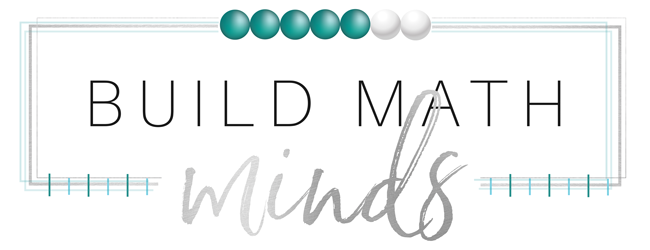Join the Build Math Minds PD site
Welcome fellow Recovering Traditionalists to Episode 183: The Count – Uncovering Mathematical Structure in Elementary Classrooms
Today, we’re exploring another incredible activity that helps students dive deep into mathematical thinking: an activity called “The Count.” For members of the Build Math Minds PD site, Rosalba has created slides of Count Sequences for you to use. It is linked in the What’s New area. Before we get into this episode I wanted to let you know about a special thank you that’s only available to those who watch/listen to these episodes and to people on my email list. If you’ve been hearing about the resources we have available inside Build Math Minds and wanted to try it out, I’m doing a special that you can start a membership for $1. The $1 will give you 10 days to test out the site before your membership actually starts. If you don’t want to continue with the membership, just cancel before those 10 days and no more will be charged. If you like the site and want to continue, you don’t have to do anything and your membership of $39/month will start. Just go to buildmathminds.com/special to enroll. We will have this offer up through the first of the year so that those of you who want to take some time over the holidays to dig into the resources you can pick when you’d like to get started in the site. So if you want to wait until your holiday has started just put a reminder in your phone to go to buildmathminds.com/special to enroll.
Okay, let’s talk about The Count. The Count is more than just a counting activity – it’s a powerful tool for helping students look for and make use of mathematical structure, the 7th Math Practice.
The Count is another routine that is inside John SanGiovanni’s book Daily Routines to Jumpstart Math Class and is similar to Counting Circles. It’s a structured classroom routine where students count in an intentional, strategic way that reveals the underlying patterns in our number system.
Here’s how it typically works: The teacher picks a starting number and a counting sequence – you’re not just counting by ones. I mean you can but often you are counting by a specific interval.
For example, imagine a second-grade classroom starting at 33 and counting by 5s. The sequence would start out as: 33, 38, 43, 48, 53, 58, 63, and so on.

But here’s where The Count becomes magical for Standard #7 – Look for and Make Use of Structure. As students progress through the counting sequence, they start to notice things and hopefully see the patterns. They recognize how numbers relate to each other.
In our example of counting by 5s, students might start to observe:
- The ones digit follows a predictable pattern
- There is a pattern to the number in the tens place
- There are relationships between the numbers that go beyond simply adding 5, like what do you notice about how every other number relates to each other?
The beauty of The Count is that it transforms counting from a mindless recitation into a deeply analytical mathematical experience.
The Count is a great math activity because:
- It develops number sense in a way traditional worksheets never could
- It encourages students to verbalize their mathematical thinking
- It creates a low-pressure environment for mathematical exploration
- It makes abstract mathematical structure tangible and visible
Implementing The Count is surprisingly simple. Choose a starting number. Select an interesting counting sequence. Start counting. Now, I do recommend you actually write out the sequence of numbers because sometimes the sequence doesn’t produce a very cool pattern that will grab students’ attention.
Then when you are doing The Count in the classroom, the key is to pause frequently to ask students what they notice, invite them to predict the next number, guess which student will say a specific number, determine if they will end up even saying a specific number, or challenge them to explain the underlying structure that leads to the patterns they are seeing.
Here’s a few more tips for making The Count most effective:
- Start with simpler sequences and gradually increase complexity
- Encourage students to look for patterns, not just count or calculate
- Create space for students to share their observations. Do partner or triad talks, it doesn’t always have to be shared with the whole group.
- Celebrate the unique ways students see mathematical structure. Even if you don’t want to investigate something in the moment a student says they see, acknowledge it and put a note on the board to investigate it later.
For members of the Build Math Minds PD site, remember you have access to the slides Rosalba has created of Count Sequences for you to use. The slides don’t show the actual sequence but they say what to start with and what to count by. If you aren’t a member, go to buildmathminds.com/special to get 10 days of access for $1.
Until next week, my fellow Recovering Traditionalists, keep letting your students explore math, keep questioning, and most importantly, keep Building Math Minds.




